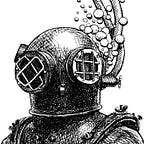Landscape Orientation
Out standing in my field
In the early Spring of 2022, Kaitlyn, our district Councilwoman, approached me about organizing some on-location painting events in some of our town parks.
In addition to her duties on the town council, Kaitlyn sat on commissions overseeing the governance of two of the town’s parks. One topic on their agenda was bringing art into the parks. After several ideas were discussed, they settled on having artists go to the parks with their paints and easels to create artwork on location. This practice actually has a name: plein air, a French phrase meaning painting outdoors.
A little history of plein air painting
Prior to the mid 19th century, plein air painting was not practical. Artists mixed their paints in their studios by grinding expensive color pigments with linseed oil, the main medium in oil paints. The paints were stored in a pouch made from pig’s bladder which, once filled, was tightly closed with a string. To dispense the paint onto their palette, the artist had to puncture the bladder with a pin or a tack and squeeze the paint out. There was no effective way to reseal the hole so the remaining paint inside the bladder was prone to drying out. The bladders were also prone to tearing or bursting when moved so carrying them to a remote location proved problematic.
This all changed in 1841 when John Goffe Rand, an American portrait painter living in London, invented and patented a collapsable metal tube made from zinc which was sealed with a hard crimp at the bottom and whose small opening at the top could be closed with a stopper. The paint tubes were sturdy and portable.
In the mid-19th century another innovation was the French easel, also known as the box easel. Carrying paints and other supplies outside the studio became easier. The tripod telescopic legs could be extended or collapsed for travel and storage. The easel’s extendable mast could hold a canvas securely and behind it was a built-in box for storage of paint tubes and brushes. Some variations of the easels included a wooden palette for mixing paints. The name of the inventor of the French easel has been lost to time.
With these two inventions, the French impressionists embraced plein air art which made their landscape paintings more vibrant and spontaneous.
Landscape painting in Stratford
Not all of the scenes I painted of locations around town are plein air. More often than not, I work from photos I take while traveling around town.
Shakespeare Park was the home to a nationally-known theater built in the 1940s to perform mostly Shakespeare plays. Many well-known actors performed on its stage. The theater burned down in 2019. The abstract sculpture on the right was made by a local artist, David McNeil, from some of its steel bones that survived the blaze.
Great Meadows Marsh is a national wildlife refuge and a habitat for fish, marsh plants as well as a breeding ground and migrating stop-over for over 200 species of birds.
I encourage other artists and photographers to explore the unique places near where you live. People love to see their communities reflected back to them in art.
The artists who participated in the plein air in the parks events I began this article with were able to show their paintings at a local tea shop here in town later in the year.
If you would like to purchase giclée prints of any of the artwork I featured in this article, leave me a comment specifying which image. Alternatively, you can contact me through my design website.
I am happy to take on commissions, nude, clothed, portrait or pets.
If you enjoyed this article, please consider buying me a coffee. It would be very much appreciated.
